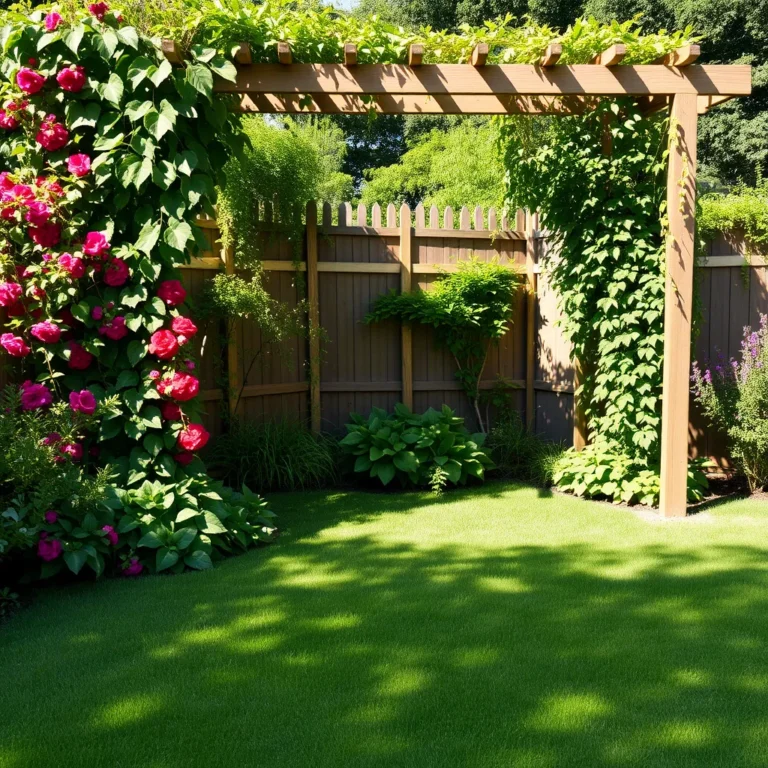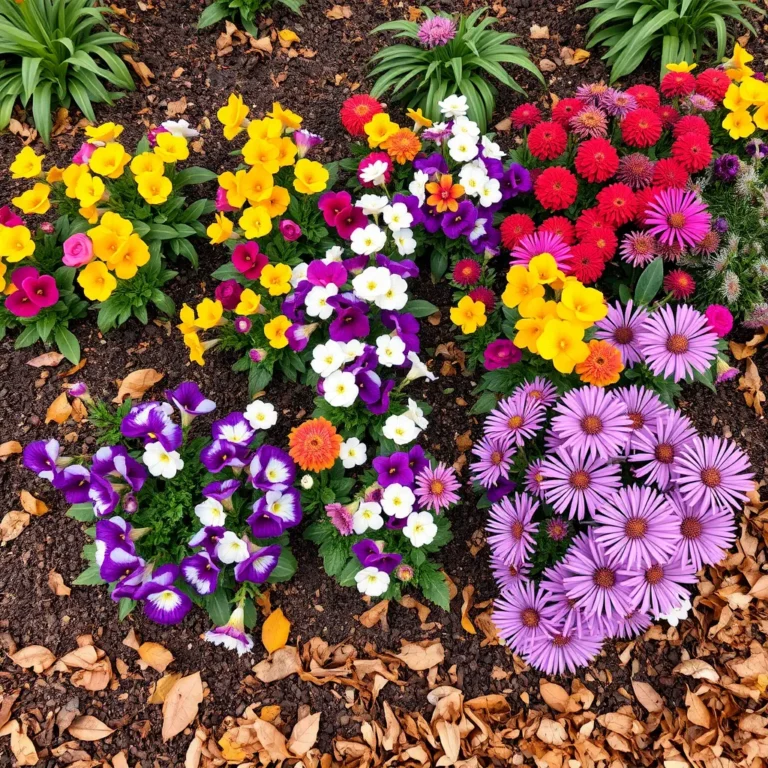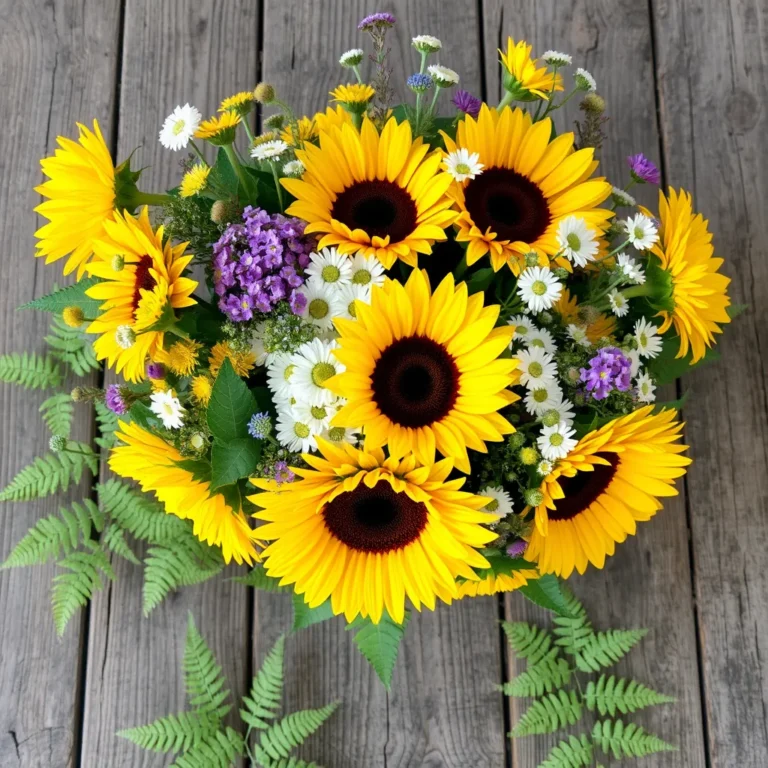7 Simple DIY Garden Path Ideas to Boost Curb Appeal
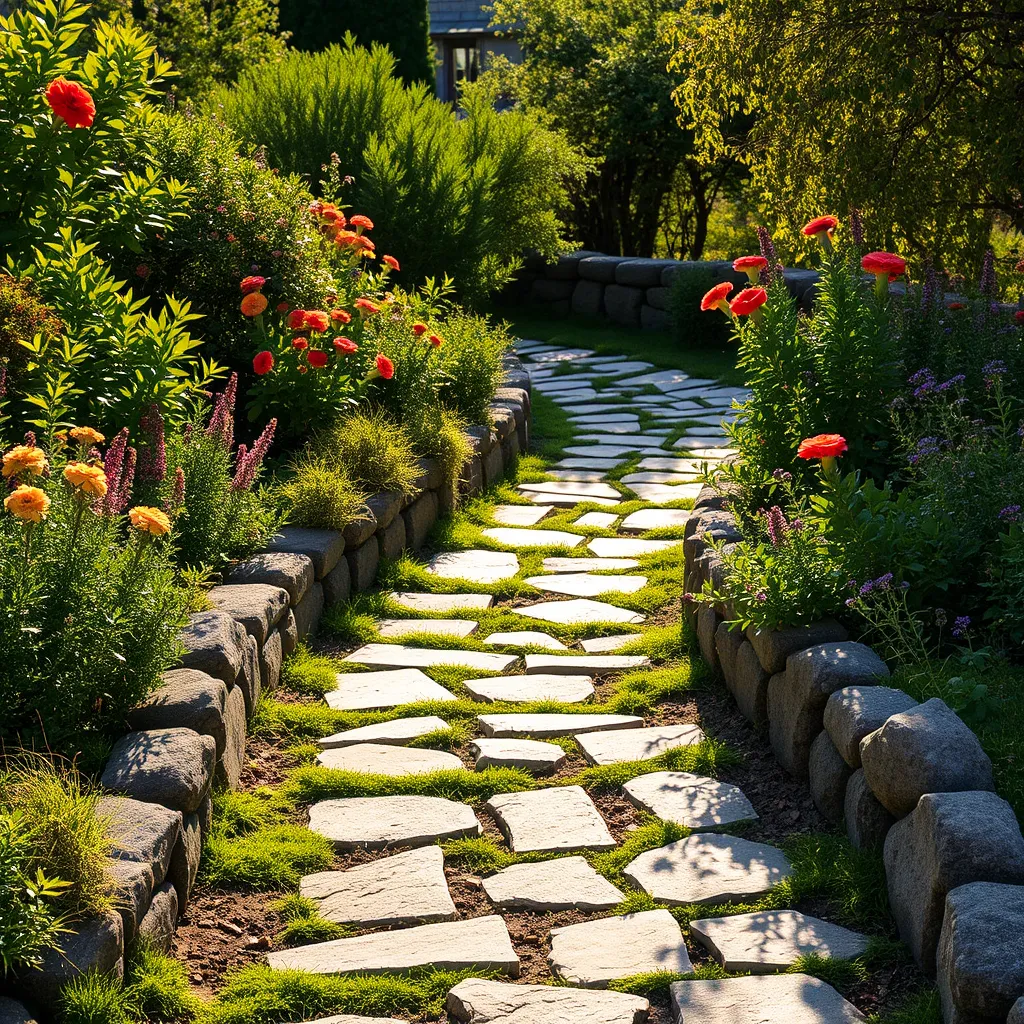
Want to boost your home’s curb appeal? You’re in the right place! In this guide, I’ll share seven simple DIY garden path ideas that anyone can try. From rustic stone walkways to colorful brick paths, these projects are easy to tackle and will instantly enhance your garden’s charm. Get ready to transform your outdoor space into a welcoming oasis that you and your guests will love!
Rustic Stone Walkway: A Step-by-Step Guide
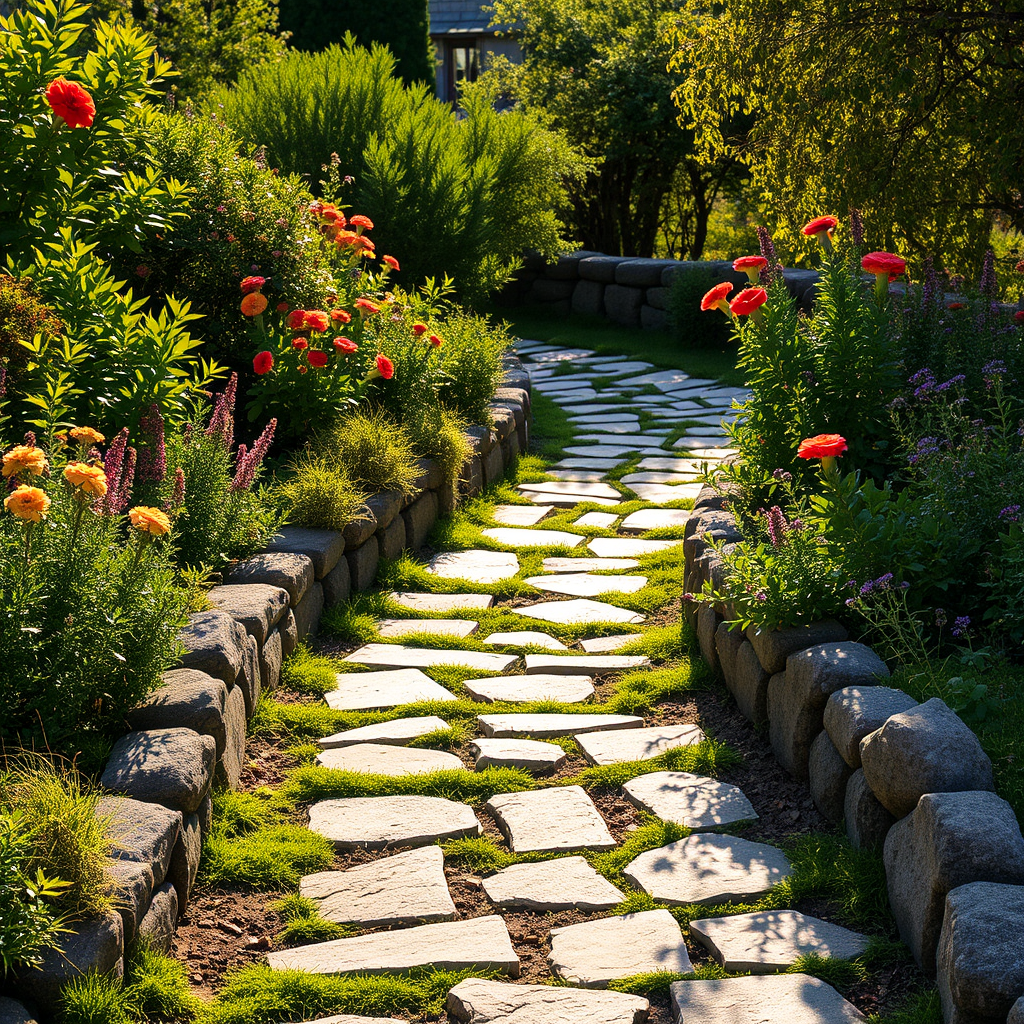
To create a rustic stone walkway, gather these materials: solid stones or pavers, gravel, and sand. Choose stones that fit your style. They can be large or small, round or flat. I recommend using stones that blend with your garden.
How to choose the right stone size and shape for your pathway
Pick stones that are easy to walk on. Flat stones are great for a smooth path. Round stones add a fun look but can be tricky to walk on. Aim for stones that are 1-3 inches thick. This size gives your path strength and stability.
Detailed instructions on layout and installation
1. Plan the path: Mark where you want the pathway. Use string or stakes to outline it.
2. Excavate the area: Dig about 3-4 inches deep for your path. This gives space for gravel and stones.
3. Add gravel base: Pour about 2 inches of gravel into the dug area. Level it with a rake.
4. Lay sand: Add 1 inch of sand on top of the gravel. This helps level the stones.
5. Place stones: Start laying your stones in the desired pattern. Leave small gaps between them.
6. Fill gaps: Use more gravel to fill gaps. This keeps weeds out and adds stability.
7. Compact the path: Walk on the stones to make sure they are set.
Your rustic stone walkway will not only look good but also boost your curb appeal!
Colorful Brick Pathway: Adding Charm to Your Garden

For a colorful brick pathway, you need a few simple materials. Gather clay bricks, mortar, and landscaping fabric. These items help you create a fun and bright path.
When picking your bricks, think about colors and patterns. You can mix reds, yellows, or blues to make your path pop. Consider using a herringbone or basketweave pattern for added style. Choose colors that match your home or garden.
Here’s how you can build your path:
1. Plan Your Path: Decide where your path will go. Measure the area to know how many bricks you need.
2. Prepare the Ground: Clear any grass or weeds. Use a shovel to dig about 4 inches deep. Lay landscaping fabric to stop weeds from growing.
3. Lay the Bricks: Start laying the bricks on the fabric. Leave small gaps between them for mortar. Use a level to ensure they are even.
4. Mix and Apply Mortar: Follow the instructions on your mortar. Spread it in the gaps between the bricks. Smooth it out with a trowel.
5. Let It Set: Allow the mortar to dry for at least 24 hours. This step makes your path strong and sturdy.
This colorful brick pathway will not only guide guests but also boost your garden’s charm.
Gravel Pathway: A Quick and Economical DIY Solution

For a simple and cost-effective garden path, consider a gravel pathway. This option is easy to make and suits many styles.
Materials needed:
– Gravel
– Edging
– Landscaping fabric
Start by laying down landscaping fabric. This fabric stops weeds from growing through your path. Next, decide how wide and long you want the path.
Best practices for leveling and compacting gravel for stability
After outlining the area, dig about two to three inches deep. This step gives the gravel a stable base. Pour the gravel into the space. Use a rake to spread it evenly.
Compact the gravel well. A tamper helps make it firm. This step keeps the path from shifting or sinking over time.
Cost-effective variations for gravel types and colors
You can choose from many types and colors of gravel. Look for options like pea gravel or crushed stone. These materials can change the look of your path without breaking the bank.
Mixing different colors adds charm. You can create patterns or borders too. This simple path can make your garden feel warm and welcoming.
Wooden Boardwalk: A Natural Addition to Your Garden

To build a wooden boardwalk, you need a few simple materials:
– Treated lumber
– Screws
– Outdoor sealant
Start by measuring the area where you want your path. Mark the spots with stakes and string. This helps you see the path shape. Next, cut the treated lumber into equal lengths. The width should fit your space.
Lay the boards on the ground. Use screws to join them. Make sure they are level and sturdy. For safety, add a sealant to protect the wood from rain and sun.
After your boardwalk is done, keep it looking good. Clean it regularly to remove leaves and dirt. Check for loose screws and fix them right away. You can also reapply the sealant every few years. This helps the wood last longer and stay strong.
Mulch Trail: Eco-Friendly and Easy to Create
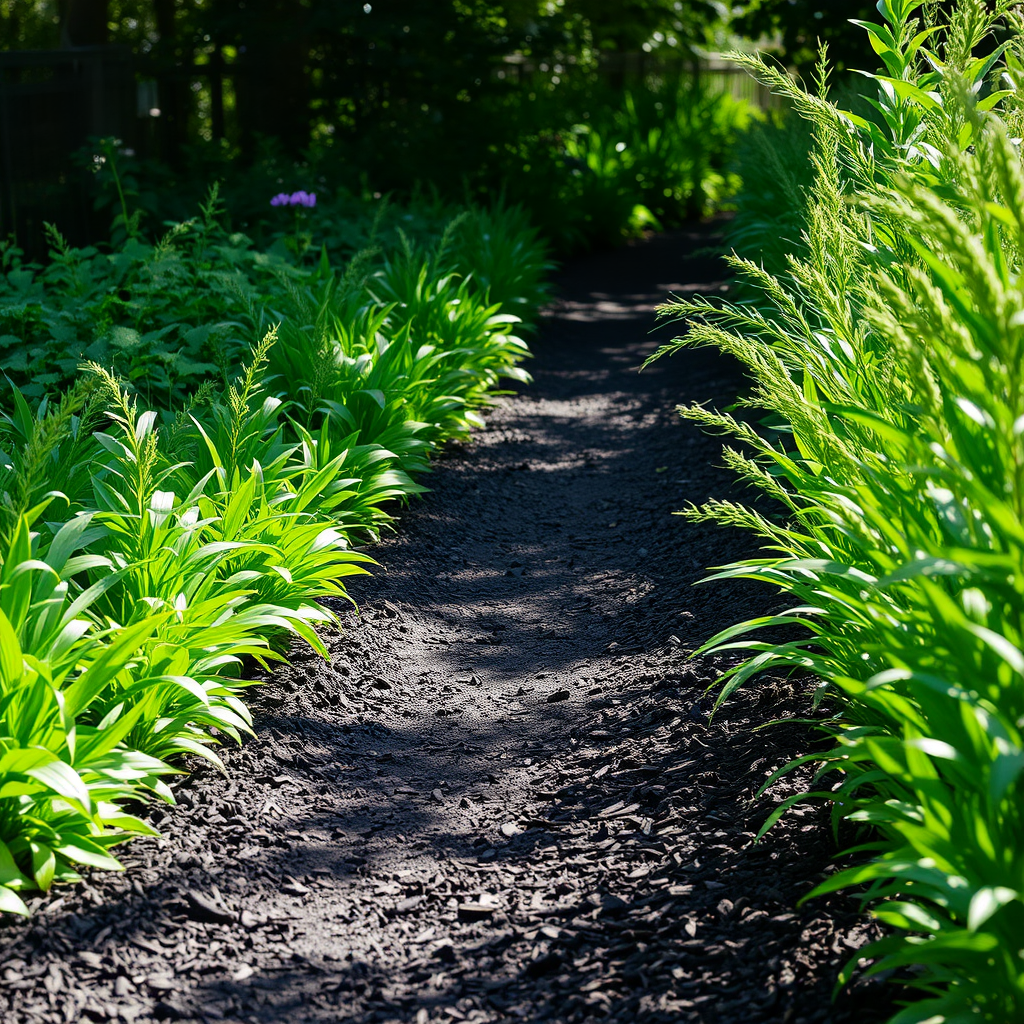
To make a mulch trail, you need a few simple materials:
– Organic mulch
– Landscaping fabric
First, clear the area where you want your path. Remove any weeds or grass. This helps keep your path neat. Next, lay down landscaping fabric. It stops weeds from growing through the mulch. Make sure the fabric overlaps at the edges to block all weeds.
Now it’s time to add your mulch. Pour a thick layer of organic mulch over the fabric. Aim for about three inches deep. This depth helps keep moisture in the soil. It also protects plant roots from temperature changes.
Mulch has many benefits. It helps plants stay healthy by retaining water. It also breaks down over time. This adds nutrients to the soil. Plus, a mulch trail looks great! It blends well with nature. You can choose different colors and types of mulch to match your garden style.
A mulch trail is not just easy; it is also eco-friendly. It uses natural materials and helps your garden thrive.
Flagstone Pathway: A Timeless Design Choice
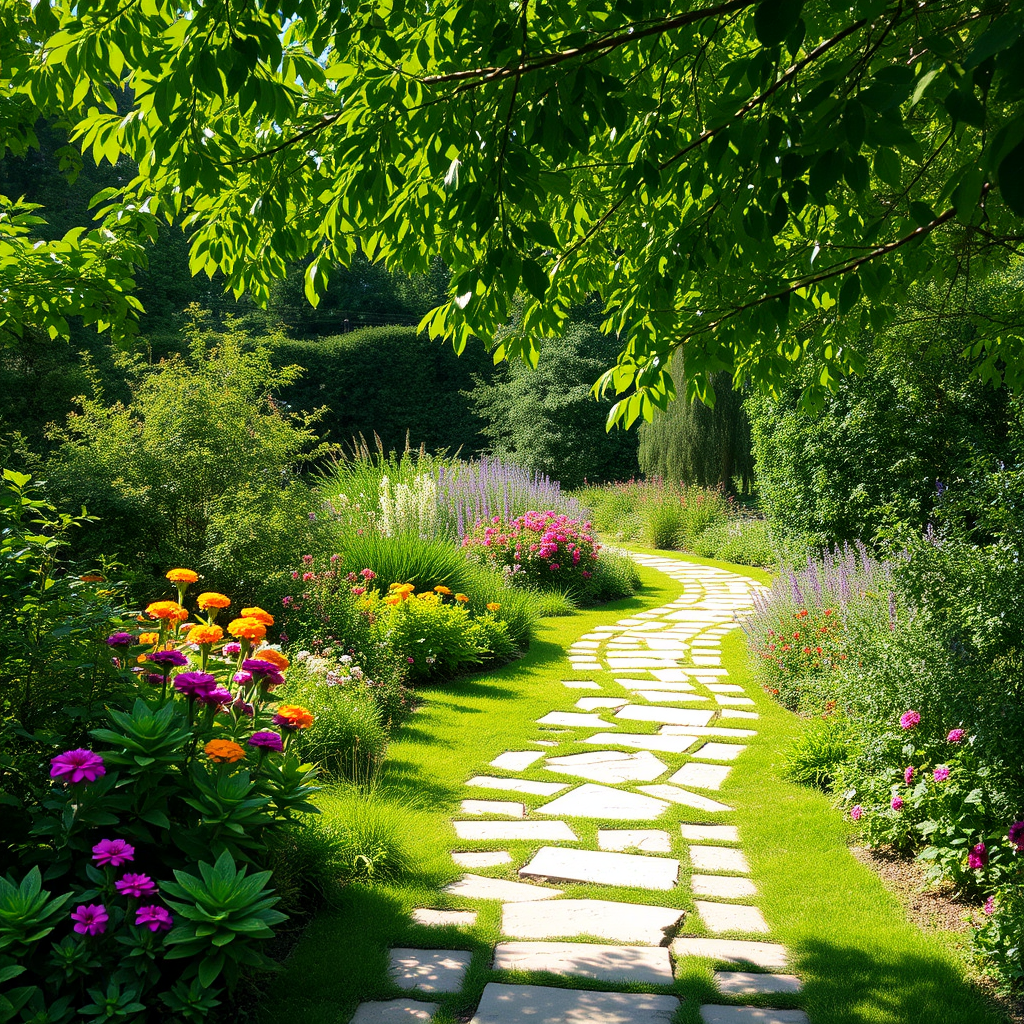
To create a flagstone pathway, gather these materials:
– Flagstones
– Sand
– Edging materials
Start by deciding where you want your path. Mark the area with stakes and string. This helps you see the layout.
Next, dig a shallow trench where the stones will sit. Make it about 2 to 4 inches deep. Add a layer of sand to the bottom. This will help set the stones and keep them level.
Now, lay the flagstones in your desired pattern. You can space them evenly or create a more natural look. Make sure to leave small gaps for plants or ground cover. This adds charm and helps with drainage.
After you arrange the stones, fill the gaps with more sand. This holds the stones in place. Use a broom to sweep away any extra sand.
When sourcing flagstone, check local suppliers. Prices can vary by region. You might find good deals at garden centers or stone yards. Expect to pay between $2 and $5 per square foot.
A flagstone pathway enhances your garden’s beauty. It gives a classic touch that lasts for years.
Concrete Stepping Stones: A Modern DIY Approach

Materials needed:
– Concrete mix
– Molds
– Sealant
How do I make concrete stepping stones?
To start, mix your concrete according to the package. Pour the mix into the molds evenly. Let it sit for a few hours to set. Once it’s firm, carefully remove the stones from the molds.
How do I finish the concrete stones?
After removing the stones, smooth out any rough edges. Use sandpaper for a nice finish. Seal the stones with a clear sealant. This will help protect them from rain and sun.
How can I personalize my stepping stones?
You can add fun designs to your stones. Use small pebbles or shells to create patterns. You can also impress leaves or flowers into the wet concrete. This gives each stone a unique look.
These steps make your garden path stand out. Plus, they are easy enough for anyone to try!
Conclusion
This guide covers diverse options for creating pathways in your yard. You learned about rustic stones, colorful bricks, gravel, wooden boardwalks, and more. Each type has unique materials and steps for a successful build. These pathways add beauty and function to your garden. Choose your favorite style, gather your materials, and start your project. Creating your own pathway can enhance your space and fulfill your creative vision. Enjoy the process, and watch your garden transform!


